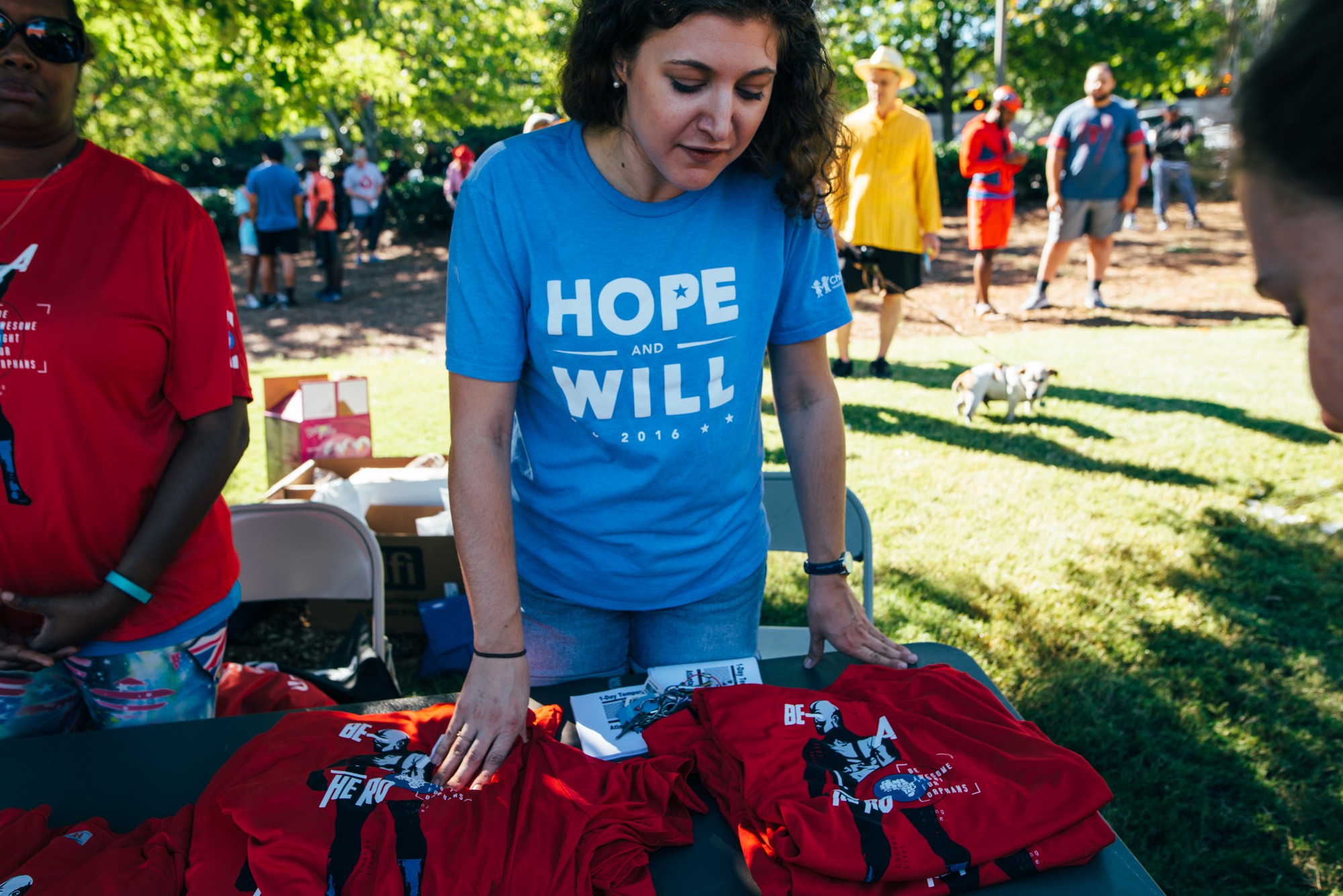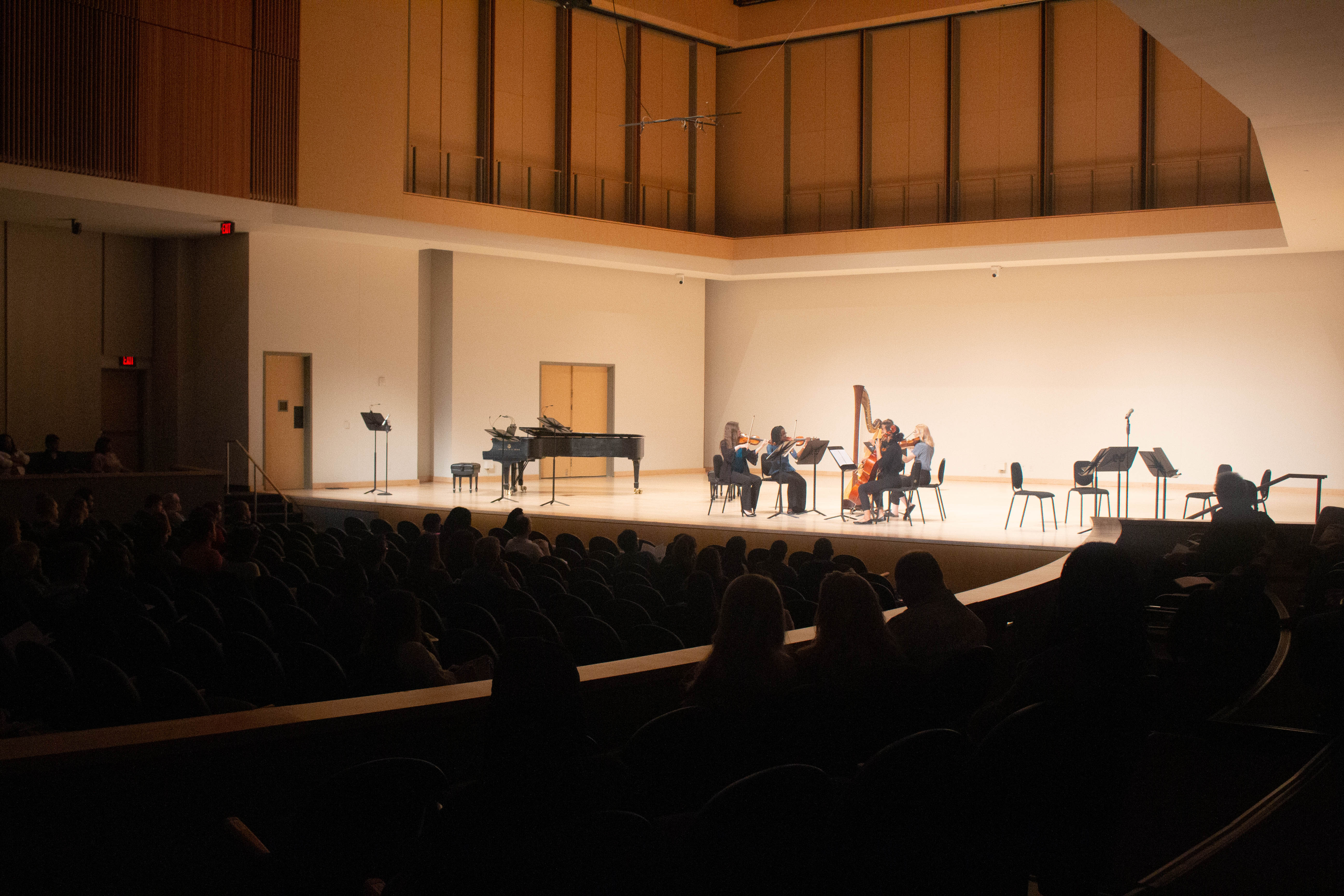This article has been edited for clarity.
On Feb. 17, the Black Musicians Coalition put on a production entitled “The Blueprint: #BacktoBlack,” an annual student-written, -directed and -led show, with this year’s show following characters OJ, Malia and Jack Black on their journey to find what their blackness means to them through art, with the help of character the Voice.
Student directors Jasmyn Francis, Reyanna Edwards and Eileen Moyo state in the director’s note that the three of them “worked really hard on creating a story that showcases variations of Black history throughout the diaspora. We wanted a story that highlighted our historical heroes who are not typically mentioned, and delicately touch on current events that affect our community.”
The writing in this show was top tier. The show never felt stagnant and flowed from moment to moment with ease.
Everyone in the show put on a great performance, from the dancers to the vocalists, but the performances of the four main characters really solidified the meaning of the entire production.
One performance was curated by Jay Liburd, who played the character OJ, a Nigerian-American trying to find his voice in the world. Liburd did a great job making sure he stayed grounded in his character, never straying too far from the message, and with great comedic timing.
Another noteworthy performance was by Ebony Golden, who played the character of Malia, a queer Black woman trying to decipher her intersectionality and what it means to her. Golden provided great insight through her acting into what it is truly like to be unsure of the path one should take, especially when it comes to their identity.
One of the other great performances was by Maurice Clermont, who played the character Jack Black. The audience is taken through the journey of Jack Black learning more about the history of music when it pertains to Black people, which is almost always the case. The audience saw the development of his story – and watched it closely – with an amazing vocal performance by Clermont.
The most notable performance, however, was by Sabastian E. Wilson, who played the role of the Voice. Throughout the first act, the Voice is a seemingly omniscient being, guiding protagonists through their personal quests.
At the beginning of the second act, the Voice reveals themself as Wilson and becomes even more ethereal after taking away the mystery of who the character is. Wilson captivated everyone with their performance, especially with the recital of poem “Love Liberates.” They left the audience wishing they had a “Voice” of their own.
The program answers some questions viewers may have had about the creative process of the show, like why The Blueprint was created in the first place. It states it “was created by and for the students who struggled to find a place in the arts due to the color of their skin.”
Sydnee Goode, president of the BMC also states in the program that, “at a primarily white institution, Black students, especially Black artists, do not get the respect, recognition, and care they deserve. Therefore, we created our own table since there was never one for us. Every year, we invite more new, diverse Black creatives to take a seat at our table so we can create a movement that will last for generations to come.”
The Black Musicians Coalition put an immense amount of work into this production, namely Executive Board members Sydnee Goode, Camille Core, Kylah Edge, Nubia Causey and Reyanna Edwards.
Outside of the show itself being amazing, the premise and reasoning behind creating it are admirable. Being a Black creative has always been a trying field to succeed in, but can be even more difficult when one is surrounded by others who look nothing like them, and who have seemingly been handed everything they desire.
This message is extremely important to emphasize, not just during Black History Month, but all year round; as the title of the show says, Black people are the Blueprint. KSU is lucky to have talented Black creatives, such as the ones who created and performed this piece, grace Morgan Concert Hall. To learn more about the College of the Arts and its departments, visit its website.



Great article keep it up!